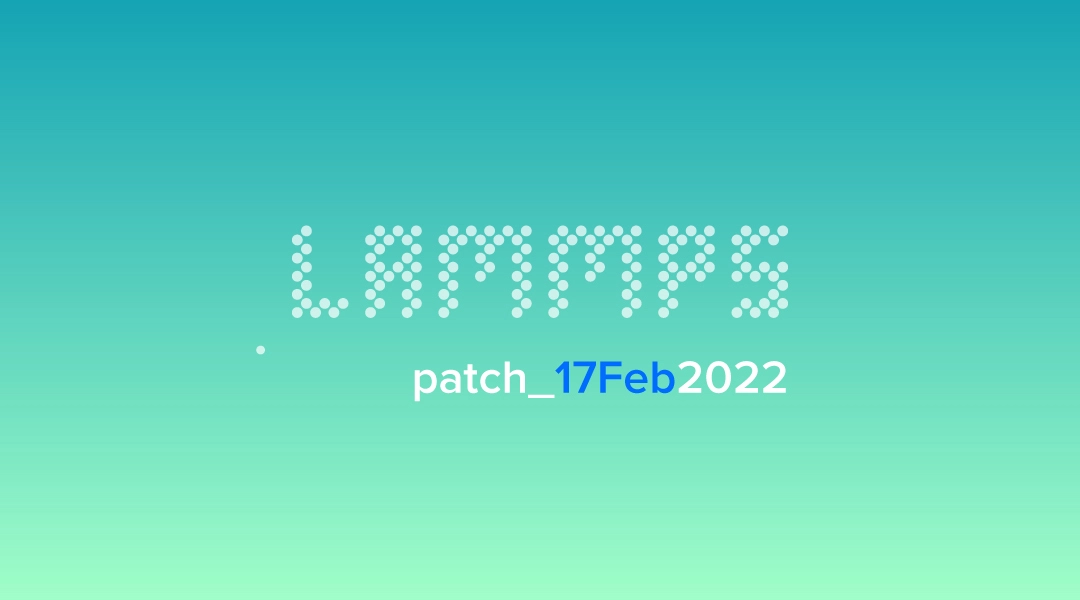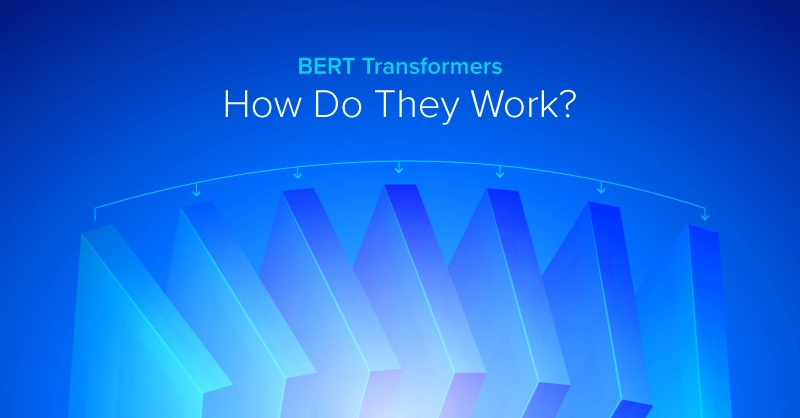
LAMMPS Patch Release Overview
What is LAMMPS used for?
LAMMPS is a classical molecular dynamics (MD) code that models ensembles of particles in a liquid, solid, or gaseous state. It can model atomic, polymeric, biological, solid-state (metals, ceramics, oxides), granular, coarse-grained, or macroscopic systems using a variety of interatomic potentials (force fields) and boundary conditions. It can model 2D or 3D systems with only a few particles up to millions or billions.
LAMMPS can run on single processor laptops or desktops, but is designed for parallel computers using message-passing techniques and a spatial-decomposition of the simulation domain. This includes shared-memory boxes and distributed-memory clusters and supercomputers. Many of its models have versions that provide accelerated performance on CPUs, GPUs, and Intel Xeon Phis. The code is designed to be easy to modify or extend with new functionality.
Interested in getting faster results?
Learn more about LAMMPS Certified GPU Workstations and Servers starting around $6,000
Changes since the 7 January 2022 patch release:
- Add new pair style
harmonic/cutproviding a repulsive-only harmonic potential (Axel Kohlmeyer, Temple U) PR #3087 - Add new fix
numdiff/virialfor deriving virial stress from potential energy via numerical differences (Aidan Thompson, SNL and Charlie Sievers, UC Davies) PR #3105 - Add two new interlayer pair styles
ilp/tmdandsaip/metal(Wengen Ouyang, Wuhan University) PR #3125 - Refactor source code to replace use of the
virtualkeyword in derived classes with the equivalentoverridewhich allows to detect some common problems at compile time (Richard Berger, Temple U) PR #3090 - new option for multi-file dumps to have files that are more evenly sized to address post-processing and visualization issues for simulations of very large systems (Stan More, SNL) PR #3097, PR #3110
- accelerator support (including KOKKOS) and improvements for
dynamical_matrixandthird_ordercommands (Charlie Sievers, UC Davis) PR #2233 - performance improvements and added unit tests for oxdna atom style (Oliver Henrich, Strathclyde U) PR #3104
- Portability updates for PyLammps (Richard Berger, Temple U) PR #3115
- re-implementation of the
tools/eam_databaseFortran code in Python (Germain Clavier, TU Eindhoven) PR #3126 - port bundled unit tests and external OpenCL ICD loader to be compiled and run on Windows using the MSVC toolchain (Axel Kohlmeyer, Temple U) PR #3102, PR #3116, PR #3127
- update force style unit tests to work with Kokkos + OpenMP (Richard Berger, Temple U) PR #3035
- update setup.py in python module to use setuptools instead of deprecated distutils (Richard Berger, Temple U) PR #3101
- various optimizations, corrections, refactoring, and compatibility updates for the KOKKOS package (Stan Moore, SNL and multiple collaborators) PR #3082, PR #3088, PR #3092, PR #3100, PR #3111
- Many small bug fixes, minor code improvements, and coding style, build system, documentation, formatting updates (multiple authors) PR #3089, PR #3091, PR #3095, PR #3103, PR #3117, PR #3120, PR #3123, PR #3124, PR #3129, PR #3130, PR #3133, PR #3134, PR #3136
Backward compatibility notices:
- Using the PyLammps python module now requires the presence of numpy
This release has 2 assets:
- Source code (zip)
- Source code (tar.gz)
Visit the release page to download them.
About LAMMPS
LAMMPS (Large-scale Atomic/Molecular Massively Parallel Simulator) a classical molecular dynamics simulation code designed to run efficiently on parallel computers. It was developed at Sandia National Laboratories, a US Department of Energy facility, with funding from the DOE. It is an open-source code, distributed freely under the terms of the GNU Public License (GPL).
Have any questions about LAMMPS or other applications for molecular dynamics? Contact Exxact Today

LAMMPS Patch Release 17 February 2022
LAMMPS Patch Release Overview
What is LAMMPS used for?
LAMMPS is a classical molecular dynamics (MD) code that models ensembles of particles in a liquid, solid, or gaseous state. It can model atomic, polymeric, biological, solid-state (metals, ceramics, oxides), granular, coarse-grained, or macroscopic systems using a variety of interatomic potentials (force fields) and boundary conditions. It can model 2D or 3D systems with only a few particles up to millions or billions.
LAMMPS can run on single processor laptops or desktops, but is designed for parallel computers using message-passing techniques and a spatial-decomposition of the simulation domain. This includes shared-memory boxes and distributed-memory clusters and supercomputers. Many of its models have versions that provide accelerated performance on CPUs, GPUs, and Intel Xeon Phis. The code is designed to be easy to modify or extend with new functionality.
Interested in getting faster results?
Learn more about LAMMPS Certified GPU Workstations and Servers starting around $6,000
Changes since the 7 January 2022 patch release:
- Add new pair style
harmonic/cutproviding a repulsive-only harmonic potential (Axel Kohlmeyer, Temple U) PR #3087 - Add new fix
numdiff/virialfor deriving virial stress from potential energy via numerical differences (Aidan Thompson, SNL and Charlie Sievers, UC Davies) PR #3105 - Add two new interlayer pair styles
ilp/tmdandsaip/metal(Wengen Ouyang, Wuhan University) PR #3125 - Refactor source code to replace use of the
virtualkeyword in derived classes with the equivalentoverridewhich allows to detect some common problems at compile time (Richard Berger, Temple U) PR #3090 - new option for multi-file dumps to have files that are more evenly sized to address post-processing and visualization issues for simulations of very large systems (Stan More, SNL) PR #3097, PR #3110
- accelerator support (including KOKKOS) and improvements for
dynamical_matrixandthird_ordercommands (Charlie Sievers, UC Davis) PR #2233 - performance improvements and added unit tests for oxdna atom style (Oliver Henrich, Strathclyde U) PR #3104
- Portability updates for PyLammps (Richard Berger, Temple U) PR #3115
- re-implementation of the
tools/eam_databaseFortran code in Python (Germain Clavier, TU Eindhoven) PR #3126 - port bundled unit tests and external OpenCL ICD loader to be compiled and run on Windows using the MSVC toolchain (Axel Kohlmeyer, Temple U) PR #3102, PR #3116, PR #3127
- update force style unit tests to work with Kokkos + OpenMP (Richard Berger, Temple U) PR #3035
- update setup.py in python module to use setuptools instead of deprecated distutils (Richard Berger, Temple U) PR #3101
- various optimizations, corrections, refactoring, and compatibility updates for the KOKKOS package (Stan Moore, SNL and multiple collaborators) PR #3082, PR #3088, PR #3092, PR #3100, PR #3111
- Many small bug fixes, minor code improvements, and coding style, build system, documentation, formatting updates (multiple authors) PR #3089, PR #3091, PR #3095, PR #3103, PR #3117, PR #3120, PR #3123, PR #3124, PR #3129, PR #3130, PR #3133, PR #3134, PR #3136
Backward compatibility notices:
- Using the PyLammps python module now requires the presence of numpy
This release has 2 assets:
- Source code (zip)
- Source code (tar.gz)
Visit the release page to download them.
About LAMMPS
LAMMPS (Large-scale Atomic/Molecular Massively Parallel Simulator) a classical molecular dynamics simulation code designed to run efficiently on parallel computers. It was developed at Sandia National Laboratories, a US Department of Energy facility, with funding from the DOE. It is an open-source code, distributed freely under the terms of the GNU Public License (GPL).
Have any questions about LAMMPS or other applications for molecular dynamics? Contact Exxact Today




.jpg?format=webp)